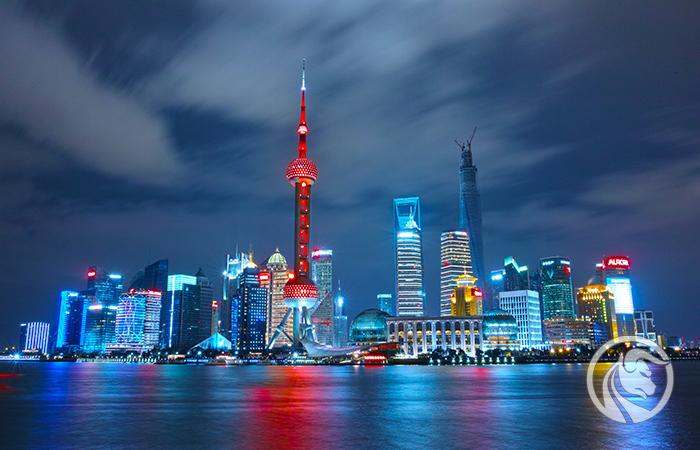Asia the world's most dynamic center
According to forecasts Of the International Monetary Fund (IMF) the Asia-Pacific region is set to be the world's most dynamic center in 2023, mainly thanks to optimistic forecasts for China and India. The region's two largest emerging economies are expected to account for around 50% of global growth this year, with the rest of the Asia-Pacific region accounting for another fifth.
Thanks to the proactive measures implemented by policy makers in Asia to mitigate systemic risk, the region has been relatively resilient to the recent banking turmoil besetting the US and Europe. This helped ease market anxiety and capital flows to Asian economies have resumed thanks to favorable financing conditions for sovereign issuers and the stabilization of Asian currencies.
Coordinated monetary tightening by central banks, combined with lower commodity prices and transportation costs, has led to the first signs of easing inflationary pressures in Asia.
However, while financial conditions have improved from last year's uncertainty peak, core inflation in the region remains flat as elsewhere in the world. Global trends potentially continue to contribute to instability in the region, and the area's economic conditions are not immune to the increasing global instability seen in recent months. As a result, the region remains vulnerable to the negative effects of an unstable market environment.
GUIDE: Nikkei, Hang-Seng, Kospi - How to invest in Asian indices?
Economic expansion
The opening of the Chinese economy is crucial for the region. This is expected to lead to a recovery in private consumption, which will lead to a recovery in economic growth in China. As in the rest of the world, domestic demand is expected to remain Asia's top growth driver in 2023.
The recovery in private consumption was supported by the withdrawal of accumulated excess savings, reflecting a combination of lockdown spending cuts, a desire to increase preventive savings and large government transfers. Increased consumption is expected to continue this year as household saving rates have yet to normalize. As such, the improved outlook and continued favorable financial conditions in many Asian economies are likely to support household consumption and business credit flows.
The IMF predicts that GDP growth in the region will increase to 4,6% in 2023 from 3,8% in 2022, driven by global and regional factors. Growth in Asia will be driven mainly by recovery in China and strong expansion in India. China's economy is projected to grow by 5,2% in 2023, while India's growth rate is expected to slow slightly from 6,8% in 2022 to 5,9% this year.
Similarly, the economies of the Association of Southeast Asian Nations (ASEAN) will record a decrease in growth from 5,7% in 2022 to 4,6% in 2023. This can be attributed to a slight decrease in the dynamics of domestic demand, monetary tightening, a drop in commodity prices, and weaker external demand from the United States and Europe. Growth in Japan is expected to pick up slightly to 1,3% in 2023 due to monetary and fiscal policies. Moreover, the decline in the tech cycle is likely to dampen growth momentum in Korea and Taiwan.
Black swans are there too
Various internal and external factors are expected to affect the region's prospects and potentially become a "black swan". A slowdown in the tech sector, with reduced semiconductor sales and lower prices for electronics sold to the US from Asia, is expected to impact technology exports from the region. Moreover, the effects of the restrictive monetary policy in the region are already visible in the form of easing the situation on the housing markets and weakening the demand for investments in commercial and residential construction. In the short to medium term, the greatest risk is related to the possibility of persistently high inflation, especially in the case of emerging markets and developing economies in Asia, which are characterized by high debt levels.
However, the most significant threat in the medium to long term as a "black swan" is potential geoeconomic fragmentation resulting from geopolitical tensions, economic nationalism and the need to protect domestic industries from foreign competitors. This could have serious consequences both for global economic growth and stability, and for individual countries that could become isolated from key partnerships and economic networks.
The impact of geoeconomic fragmentation can change the balance of power in the global economy as dominant forces seek to assert their influence and protect their interests. This could lead to a less cooperative and more fragmented global economic system, with negative effects on international trade, investment and development. As such, geoeconomic fragmentation represents the "black swan" of the most significant risk to economic recovery in the region and the world.






















![Forex Club – Tax 9 – Settle tax on a foreign broker [Download the Application] Forex Club - Tax 9](https://forexclub.pl/wp-content/uploads/2024/02/Forex-Club-Podatek-9-184x120.jpg?v=1709046278)
![Trading View platform – solutions tailored to the needs of traders [Review] trading view review](https://forexclub.pl/wp-content/uploads/2024/03/trading-view-recenzja-184x120.jpg?v=1709558918)
![How to connect your FP Markets account to the Trading View platform [Guide] fp markets trading view](https://forexclub.pl/wp-content/uploads/2024/02/fp-markets-trading-view-184x120.jpg?v=1708677291)
![How to invest in ChatGPT and AI? Stocks and ETFs [Guide] how to invest in chatgpt and artificial intelligence](https://forexclub.pl/wp-content/uploads/2023/02/jak-inwestowac-w-chatgpt-i-sztuczna-inteligencje-184x120.jpg?v=1676364263)


![WeWork – the anatomy of the collapse of a company valued at $47 billion [WeWork, part II] wework bankruptcy story](https://forexclub.pl/wp-content/uploads/2024/04/wework-bankructwo-historia-184x120.jpg?v=1711729561)
![Adam Neumann – the man who screwed up Softbank [WeWork, part AND] adam neumann wework](https://forexclub.pl/wp-content/uploads/2024/04/adam-neumann-wework-184x120.jpg?v=1711728724)





![How to transfer shares to another brokerage office [Procedure description] how to transfer shares to another brokerage house](https://forexclub.pl/wp-content/uploads/2024/03/jak-przeniesc-akcje-do-innego-biura-maklerskiego-184x120.jpg?v=1709556924)

![The most common mistakes of a beginner trader - Mr Yogi [VIDEO] Scalping - The most common mistakes of a beginner trader - VIDEO](https://forexclub.pl/wp-content/uploads/2024/03/Scalping-Najczestsze-bledy-poczatkujacego-tradera-VIDEO-184x120.jpg?v=1711601376)
![Learning patience: No position is also a position - Mr Yogi [VIDEO] Scalping - Learning patience - No position is also a position - VIDEO](https://forexclub.pl/wp-content/uploads/2024/03/Scalping-Nauka-cierpliwosci-Brak-pozycji-to-tez-pozycja-VIDEO-184x120.jpg?v=1710999249)
![When to exit a position and how to minimize losses - Mr Yogi [VIDEO] Scalping - When to exit a position and how to minimize losses - VIDEO](https://forexclub.pl/wp-content/uploads/2024/03/Scalping-Kiedy-wyjsc-z-pozycji-i-jak-minimalizowac-straty-VIDEO-184x120.jpg?v=1710336731)

















